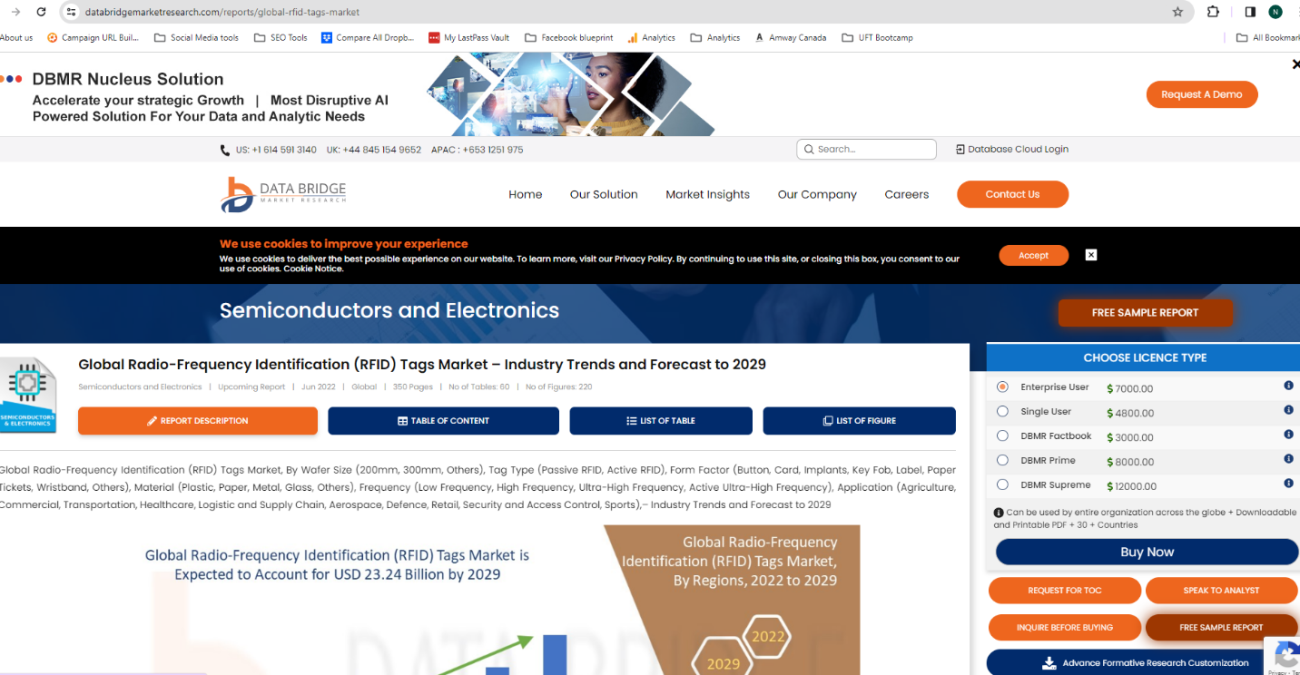
The global Radio-Frequency Identification (RFID) Tags Market is witnessing substantial growth, driven by factors such as technological advancements and increasing market demand. With applications ranging from retail to healthcare, RFID tags are becoming ubiquitous in various industries. Data Bridge Market Research forecasts that the market, valued at USD 11.21 billion in 2021, will reach USD 23.24 billion by 2029, exhibiting a CAGR of 9.54% during 2022-2029.
The report provides a comprehensive analysis of market trends, segments, and geographical coverage. It includes expert insights, import/export analysis, pricing analysis, and technological advancements. The market segmentation covers parameters such as wafer size, tag type, form factor, material, frequency, and application, offering detailed insights into industry dynamics.
Drivers of market growth include the durability and reusability of RFID tags, coupled with their increasing demand in sectors like healthcare and supply chain management. The rise in healthcare demand is attributed to the need for patient tracking and treatment history management. Moreover, the focus on improving supply chains and the emergence of emerging markets present significant opportunities for market expansion.
However, challenges such as the complexity and cost of RFID system setups, as well as privacy concerns, hinder market growth. Despite these challenges, technological innovations like chip less RFID tags with passive capabilities offer growth opportunities, particularly in replacing traditional barcode systems.
The competitive landscape features key players such as NXP Semiconductors, Honeywell International Inc., GAO RFID Inc., and others. Recent developments, including AI-driven technology implementations and product launches, underscore the industry’s commitment to innovation and market advancement.
In conclusion, the RFID tags market is poised for robust growth, driven by technological innovation, rising demand across various industries, and increasing applications. Strategic collaborations, product innovations, and technological advancements are expected to further propel market expansion, providing opportunities for stakeholders to capitalize on emerging trends and market dynamics.
